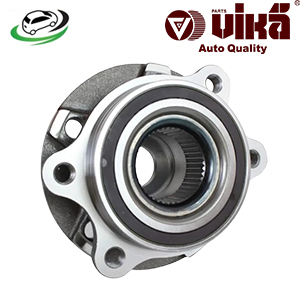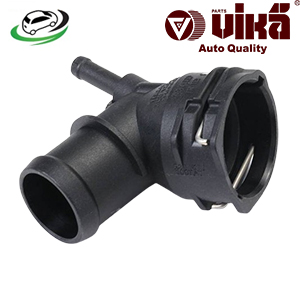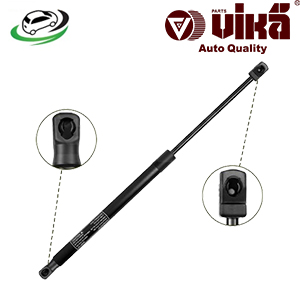-7%
Get Bonnet Damper VW Passat Alltrack B7 10-14/ 3AA823359
A bonnet damper, also known as a hood strut or hood lift support, is a crucial component in modern vehicles that aids in the smooth opening and closing of the car’s bonnet (hood). This device ensures the bonnet stays securely open when lifted, providing safety and convenience during maintenance and inspections. In this comprehensive guide, we will delve into the function, types, benefits, maintenance, and common issues associated with bonnet dampers.
Function of a Bonnet Damper
Smooth Operation
The primary function of a bonnet damper is to assist in the smooth and controlled opening and closing of the vehicle’s bonnet. It reduces the effort required to lift the bonnet and ensures it does not slam shut.
Safety
Bonnet dampers provide a secure way to keep the bonnet open, preventing it from accidentally falling and causing injury or damage to the engine components. This is especially important during maintenance or inspections.
Stability
By holding the bonnet steady, dampers prevent it from wobbling or shifting, which can be critical during windy conditions or when the car is on an incline.
Types of Bonnet Dampers
- Gas Struts
- Construction: Gas struts are the most common type of bonnet damper. They use compressed gas (usually nitrogen) and a small amount of oil within a sealed cylinder.
- Advantages: They provide smooth, consistent force throughout their range of motion, ensuring easy and controlled opening and closing.
- Disadvantages: Over time, the gas can leak, leading to a loss of pressure and reduced effectiveness.
- Hydraulic Dampers
- Construction: These dampers use hydraulic fluid to create resistance, similar to shock absorbers.
- Advantages: They can handle heavier loads and provide smooth operation.
- Disadvantages: They are typically more expensive and complex than gas struts.
- Spring-Loaded Dampers
- Construction: These use a mechanical spring mechanism to provide the lifting force.
- Advantages: They are simple and durable with no risk of fluid or gas leakage.
- Disadvantages: They may not offer as smooth an operation as gas or hydraulic dampers and can be bulkier.
Benefits of High-Quality Bonnet Dampers
Enhanced Convenience
High-quality bonnet dampers make it easy to open and close the bonnet, reducing the physical effort required. This convenience is particularly beneficial for individuals who perform regular maintenance or inspections.
Improved Safety
Reliable bonnet dampers prevent the bonnet from unexpectedly falling, reducing the risk of injury to individuals working under the bonnet and preventing potential damage to engine components.
Increased Longevity
Quality dampers ensure the bonnet remains securely open, reducing wear and tear on the bonnet’s hinges and latch mechanisms. This can extend the lifespan of these components.
Better Aesthetics
A smoothly operating bonnet damper contributes to the overall aesthetic appeal of the vehicle, giving it a more polished and well-maintained appearance.
Noise Reduction
Properly functioning dampers reduce the noise associated with opening and closing the bonnet, providing a quieter and more pleasant user experience.
Maintenance of Bonnet Dampers
Regular Inspection
- Visual Checks: Regularly inspect the dampers for signs of wear, damage, or leakage. Look for any oil around hydraulic dampers or gas struts, which can indicate a leak.
- Function Test: Open and close the bonnet to check for smooth operation. Any resistance, noise, or difficulty may indicate a problem.
Cleaning
- Keep Clean: Ensure the damper rods are clean and free from dirt and debris. Clean them with a soft cloth and mild cleaner if necessary.
- Avoid Corrosion: Protect the dampers from rust and corrosion by keeping them dry and applying a light lubricant if needed.
Replacement Intervals
- Manufacturer’s Recommendations: Follow the vehicle manufacturer’s guidelines for replacement intervals. Typically, bonnet dampers should be replaced every few years, depending on usage.
- Signs of Wear: Replace the dampers if you notice decreased performance, visible damage, or leakage. Do not wait for complete failure, as this can lead to safety hazards.
Common Issues with Bonnet Dampers
Loss of Pressure
- Symptoms: The bonnet feels heavy, difficult to lift, or does not stay open.
- Causes: Gas struts can lose pressure over time due to gas leakage, reducing their effectiveness.
Hydraulic Fluid Leakage
- Symptoms: Presence of oil around the damper or reduced lifting performance.
- Causes: Hydraulic dampers can develop leaks, leading to loss of fluid and diminished functionality.
Corrosion and Rust
- Symptoms: Visible rust on the damper rods or mounting points.
- Causes: Exposure to moisture and harsh environmental conditions can lead to corrosion, affecting the damper’s operation.
Mechanical Wear
- Symptoms: Noises such as squeaking or grinding during operation, or difficulty in opening/closing the bonnet.
- Causes: Mechanical wear can occur due to dirt and debris accumulation or general aging of the damper components.
Replacement of Bonnet Dampers
Tools and Equipment
- Basic Tools: Screwdrivers, wrenches, or socket sets, depending on the vehicle’s specific requirements.
- Replacement Dampers: Ensure the new dampers are compatible with the make and model of the vehicle.
Steps for Replacement
- Safety First: Ensure the bonnet is securely supported before removing the dampers. Use a prop rod or have an assistant hold the bonnet open.
- Remove Old Dampers: Locate the mounting points and carefully remove the old dampers. This may involve removing clips, bolts, or screws.
- Install New Dampers: Attach the new dampers to the mounting points. Ensure they are securely fastened and oriented correctly.
- Test Operation: After installation, test the bonnet for smooth opening and closing to ensure the new dampers are functioning properly.
Professional Assistance
For those unfamiliar with vehicle maintenance, it is advisable to seek professional assistance for damper replacement to ensure proper installation and avoid potential safety hazards.
Follow us on Facebook for more parts.



